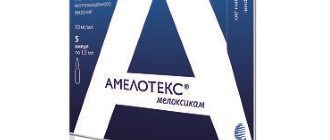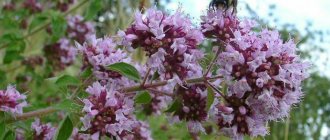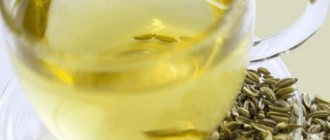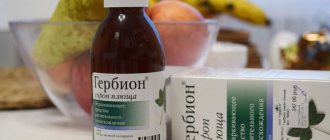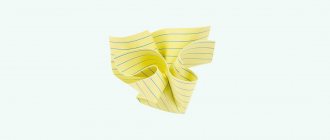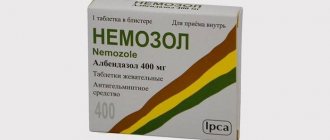Instructions for use:
- 1. Useful properties
- 2. Use in folk medicine
Sunflower (oilseed or annual sunflower) is an annual plant of the Asteraceae family, has a thick stem with one or more heads, and can reach a height of 4 meters. A single head can reach 50 cm in diameter, its marginal petals are yellow, and the middle ones are orange. The fruit of a sunflower is a tetrahedral achene. It is known that 100 grams of roasted sunflower seeds contain more than 20 grams of protein, 3.4 grams of carbohydrates and 52 grams of fat.
Sunflower was introduced from North and South America and is now grown almost all over the world for the production of sunflower oil. This plant also has medicinal properties, but not everyone knows about the benefits of sunflower.
Botanical description and range of annual sunflower (oilseed)
Oilseed (or common) sunflower in Latin is called Helianthus Annus (original name - Helianthus annuus). He belongs to the Astrov family. It is a tall herbaceous plant, reaching about 3 meters with a strong stem. The number of oval-heart-shaped leaves, 49 cm long, varies from 15 to 35 depending on the size of the sunflower. The species is famous for its large flowers , the middle of which is framed by yellow-orange petals and leaves below.
The historical homeland of the common sunflower is Mexico and Peru. It was from there that they were brought to Russia, as well as to other countries. Today, sunflower grows as a cultivated plant in many regions with a suitable climate.
Nutritional characteristics
Sunflower is the largest representative of the Asteraceae family.
This plant with erect stems can grow up to 4 m in height. Its leaves are large, heart-shaped. As a rule, up to 20 leaves develop on the stem. Sunflowers bloom from June to September with large single flowers, the diameter of which can be about 50 cm. Its roots are also quite large - in some varieties they reach 3 meters. But thanks to such a highly developed root system, sunflowers easily absorb water from the soil. By the way, plants use this ability when it is necessary to drain swampy soils or cleanse the soil of pollution, including wastewater, radioactive substances or lead.
https://www.youtube.com/watch?v=ytpolicyandsafetyru
The Latin name of this plant translates as “flower of the sun”, and it must be said that this characteristic has been preserved in the name of the flower in many languages. What else can you call a plant whose flowers resemble the sun? And by the way, this is the only plant known to botanists that turns to follow the sun during the day, and its petals open and close with dawn and sunset.
The homeland of this plant is South America, or more precisely, Mexico and Peru. The ancient Peruvians idolized this flower. During ritual ceremonies in the temples of the Sun, the priests almost always held a sunflower in their hands. And on the walls of temples, historians find numerous images of this particular flower.
Interestingly, already in ancient times the Aztecs grew several varieties of sunflowers. Today, more than 70 varieties are known, some of which are decorative. It is also interesting that the so-called dwarf sunflower grows in the mountains of Colorado. It is very similar to its large relative, but does not exceed 15-20 cm.
Sunflower seeds are a very high-calorie product. 100 grams of seeds are almost 600 kcal, approximately 25 g of protein, 1 g of carbohydrates, 42 g of fat and 4 g of plant fiber. In addition, the seeds are rich in vitamins B, A, E and many minerals. By the way, only 25 g of the product contains the daily requirement of vitamin E.
Sunflower seeds contain all the amino acids necessary for humans, and in significant quantities. In addition, this part of the plant is an exceptional source of unsaturated (healthy) fats. One of the most important is linoleic fatty acid, which the body needs to fight “bad” cholesterol. The seeds also contain equally beneficial oleic acid.
The petals of the plant can also be valuable. They contain large quantities of carotenoids, phytosterols, choline, betaine, xanthophyll, sunflower acid and sapogenins.
Active ingredients of sunflower
Sunflower is a whole storehouse of useful substances of natural origin. Therefore, they are easily absorbed by the human body. What is contained in oilseed sunflower?
- beatine;
- vitamins;
- glycosides;
- bitterness;
- tannins;
- lecithin;
- carotene;
- fatty oils;
- minerals;
- sapanoids;
- flavonoids and many others. etc.
Each of these substances has beneficial properties, which gives the plant its healing power.
Chemical composition
The following substances were found in flower petals and sunflower leaves:
- Sterols (sitosterolin glycoside);
- Saponins;
- Flavonoids (quercimeritrin);
- Anthocyanins;
- Choline;
- Scopolin (coumarin glycoside);
- Phenolcarboxylic acids (caffeic acid, chlorogenic acid, neochlorogenic acid);
- Rubber (up to 0.6%);
- Carotenoids (β-carotene, cryptoxanthin, taraxanthin);
- Tannins;
- Resinous substances;
- Betaine;
- Tartaric and citric acids.
The seeds of the plant contain carbohydrates (up to 23%), proteins (up to 20%), fatty oil (up to 50-52%), sterols, tannins, phospholipids, polyunsaturated fatty acids (especially linoleic acid), carotenoids, lecithin, vitamins E and PP.
Medicinal and beneficial properties of sunflower
How exactly do folk remedies prepared from sunflower affect the body? When used regularly they:
- lower the temperature;
- reduce spasmodic pain;
- strengthen the immune system;
- relieve inflammation;
- destroy bacteria;
- prevent the formation of cholesterol plaques;
- produce a choleretic, astringent and laxative effect.
Therefore, sunflower is used to treat a wide range of ailments or to prevent them.
Features of treatment
The benefits of sunflower leaves will be high if they are used correctly. It should be understood that folk recipes cannot replace full-fledged complex treatment. All the remedies presented below should be prescribed by a doctor as an addition to the main therapy. Only in this case will the plant be beneficial.
Most often, the recipes presented below are used as prophylactic agents. In combination with medications prescribed by a doctor, they can speed up the healing process. However, when self-medicating, the benefits can be harmful to health. Therefore, when choosing a herbal remedy, you must always consult your doctor.
Also, do not overuse treatment with folk formulations. The components that make up the prepared material will accumulate in the body. In order for them to have time to get out of it, they need to take breaks. If a person feels unwell during treatment, you should stop taking the drug.
Preparation of medicinal raw materials
To harvest sunflowers, you should choose plants that grow away from noisy roads. The optimal time for harvesting medicinal raw materials from the ground part is flowering time. In folk medicine they use:
- yellow petals;
- small leaves without petioles;
- cut stems that are crushed.
Roots and seeds are harvested in September.
After collection, the raw materials must be washed, crushed if necessary and dried in a dark, ventilated area. These ingredients for traditional medicine are stored in fabric bags. The preparations retain their beneficial properties for two years.
Doctors' recommendations
If sunflower leaves are used in the treatment of various ailments, it is very important to adhere to certain doctor’s recommendations. In this case, the effectiveness of the drug will be high.
In order for the plant to have a positive effect on the body, it is prohibited to drink alcohol during the treatment process. You also need to stick to your diet. Pickles, smoked and fatty foods are excluded from the diet. It is important to supplement the menu with fresh fruits and vegetables. It should be understood that the drugs used in the treatment, for example, of urolithiasis, wash out not only salts from the body.
It is very important to include foods rich in vitamins and microelements in your diet. This should be all fresh fruits and vegetables, cereals, baked goods made from wholemeal flour, boiled dietary meat, and fish. In this case, recovery will occur faster.
Having considered the beneficial properties of sunflower leaves, you can use it for various medicinal purposes.
The use of sunflower in folk medicine
Since various parts of the sunflower (seeds, flowers, leaves, stems and roots) contain biologically active substances that affect the functioning of the human body, traditional medicine specialists consider the plant to be universal: everything is useful. It is difficult to list all the recipes made from sunflower parts - here are some of them.
Recipes with sunflower seeds
If a person suffers from whooping cough, a disease caused by bacteria, then he is recommended to take a decoction of sunflower seeds. The drug will also help with exacerbation of tonsillitis and other diseases of the nasopharynx, if their causative agent is bacteria. To prepare the decoction you will need 3 tbsp. spoons of sunflower seeds, previously crushed. This powder is poured into 500 ml of clean water and kept at a boil over low heat until the volume of the liquid is reduced by a quarter. To make the drink taste more pleasant, the water can be sweetened with sugar, its substitute or jam. Take the medicine for 10–14 days. If relief does not occur, the course is repeated after 5 days.
Another decoction is also useful for the symptoms of colds, but it is also effective in reducing bad cholesterol in the blood. This is useful for people suffering from or prone to atherosclerosis. To prepare a decoction, take 500 g of seeds per 2 liters of water and boil for 2 hours. The product must be taken for at least 2 months: half a glass twice a day.
What are the benefits of sunflower seeds (video)
Healing remedies with sunflower leaves and stems
An alcoholic tincture of sunflower leaves, to which petals can be added, is traditionally used in folk medicine to stimulate the gastrointestinal tract and increase appetite. She also helps patients with neuralgia and lung diseases. To prepare the medicine, 3 tbsp. spoons of plant material are infused in a dark place in a glass of high-quality vodka for a week. Take this remedy 2 times every day, 40 drops. The course of treatment is 30 days.
Those who suffer from diseases of the genitourinary system and disorders of the thyroid gland will benefit from a decoction of the plant’s stems. They are crushed, and 2 handfuls of raw materials are placed in a 3 liter jar of cool water for a day. After this, the liquid is decanted and brought to a boil. All that remains is to cover the jar with gauze or breathable fabric and let it sit for another 24 hours. The medicine is drunk half a glass 3 times a day for a month, and then take a break for a week.
Remedies from sunflower root
A decoction is prepared from the sunflower root, which brings relief from diseases of the musculoskeletal system such as arthritis, osteochondrosis and salt deposition in the joints. You will need 1 tbsp. a spoonful of crushed and pre-dried sunflower roots, which is poured with 3 liters of boiling water and simmered over low heat for about 10 minutes. After straining, this medicine must be taken 2/3 glass three times a day for a month. It is recommended to adhere to a salt-free diet during the treatment period.
The decoction can also be used to treat prostate adenoma, using it as an enema liquid. To prepare this medicine, boil 1 cup of chopped roots in 3 liters of water in an enamel bowl. Then the broth should brew for another 3 hours. The optimal amount of liquid for an enema session is 1 liter. It is also recommended to use 150 g of sunflower oil for illness.
Application of sunflower flowers, inflorescences and petals
A universal flower decoction made from flowers or individual sunflower petals will help in the treatment of diseases, for prevention, and for promoting health in general . It is prepared like this: 2 tablespoons of crushed raw materials are boiled in a glass of water for no more than 10 minutes. The liquid is infused for another hour, after which plain water is added to the original volume. Drink 3 tbsp of decoction. spoons 3-4 times a day. It is better to do this half an hour before eating.
For colds and other inflammatory diseases associated with the activity of pathogenic bacteria, an infusion of sunflower petals will help relieve fever and destroy pathogens. You will need 2 tbsp. Infuse spoons of raw material in a glass of hot water for 10–12 minutes. It is especially useful to drink this remedy before bed.
A tincture of a small sunflower flower in vodka relieves gout pain. It is crushed and placed in a 1 liter jar so that the plant fills a third of the container. The rest of the space is occupied by vodka. The infusion time is 2 weeks. You need to take the medicine 1 tbsp. spoon twice a day 15–20 minutes before meals. The tincture is also used externally as a rubbing agent.
How to choose the right one
If you are lucky enough to be a visitor to a modern food fair, be sure to try a product that you like - click on it, chew it and touch the families through the bag. It is important that they are not empty!
Don't worry that they are in the public domain. However, you will clean them and most likely dry them in a pan. In this version, I was very afraid of mold or mildew, which can easily be found in such a large bag placed directly on the ground. Of course, the fungus will give itself away with the smell of mold and moisture, but it is not a fact that you will detect it right away.
When I became a mother, I began to be more careful when choosing products. When choosing between the seeds of a grandmother selling behind a store and factory-packed grains placed in a vacuum bag, I will choose the latter. This way they will definitely not become covered with mold and mushrooms!
I often choose shelled seeds, but not fried, but dried. In fact, they taste just like raw ones. Do you take them home and decide what to do next - dry or fry?
There are a huge number of varieties of seeds in bags and cups - peeled and unpeeled, fried and not, with and without salt. Which one do you prefer? Whatever you choose, the most important thing is to pay attention to the integrity of the package and its dryness, and also check the contents of the package. So you check to see if it contains dry seeds.
The expiration date can also tell you almost everything about the product. Of course, you should try to choose the freshest sunflower seeds.
About the benefits and harms of sunflower seeds for children
The child's body is constantly developing, so it is very susceptible to any influences from the outside. Food plays a special role. How will sunflower seeds benefit and harm a child?
Benefit:
- Contains antioxidants that eliminate toxins from the body, vegetable fats and vitamins. All these substances have a beneficial effect on children's health.
- The seeds normalize the acid-base balance and have an optimal ratio of proteins, fats, and carbohydrates.
- Sunflower seeds contain many useful micro- and macroelements. First of all, we are talking about calcium and iron, which are essential for growth and well-being.
- According to psychologists, the process of cracking seeds calms the nervous system.
Harm:
- If you constantly chew seeds with your teeth, this will destroy their soft enamel.
- Seeds negatively affect the vocal cords - this must be taken into account during puberty.
- Cadmium contained in the product in excessive quantities can lead to problems with the kidneys.
Therefore, parents should control the number of seeds that a child gnaws.
Benefits for the body
Sunflower contains huge amounts of vitamin E and selenium - antioxidant substances. Due to this, it is considered useful for the treatment and prevention of many serious diseases. In addition, vitamin E is important for proper brain function. Sunflower seeds are also considered useful for strengthening bones and muscles, improving digestion, for male potency and treating infertility.
Phenylalanine, contained in sunflowers, gives the plant anti-inflammatory and analgesic properties. Therefore, the plant is called a good natural medicine against arthritis and kidney inflammation. In addition, preparations made from it are effective in reducing body temperature and as an expectorant.
Contraindications and harm to culture
Taking medications made from sunflower is contraindicated for people with individual intolerance to the plant and allergies to it. It is better for pregnant and lactating women to refrain from treating them, because in their condition it is better not to experiment with traditional medicine. It is not recommended to use them to treat small children under 12 years of age, and even before reaching adulthood, a doctor’s approval is required.
The harm from eating sunflowers internally is primarily associated with its seeds . If you chew them in excessive quantities, you can even gain weight due to the high calorie content of the product. Also, seeds irritate the gastrointestinal mucosa, so they are harmful for gastritis, ulcers, colitis and other inflammatory phenomena of this part of the body. Occasionally they cause swelling due to destabilization of the kidneys if you chew too many seeds.
sunflower plant
Photo: Pixabay
No one will argue that the sunflower is beautiful and majestic. I was sure that sunflowers are a native Russian plant. But this turned out to be far from the case.
The homeland of the sunflower is North America. The wild ancestors of the sunflower are still preserved on the Californian coast of the United States and Mexico. Of course, they are very different from our annual sunflower, but that doesn’t stop them being relatives.
The annual sunflower is not found in the wild anywhere; it was introduced into cultivation by the aborigines of the American continent a very long time ago. Came to Europe about 500 years ago. It was brought by the expedition of Christopher Columbus. The sunflower arrived along with other plants exotic to Europeans from the new continent.
Of course, such a beautiful plant could not help but attract the attention of flower growers and gradually the sunflower spread throughout Europe.
This may seem strange, but initially he simply pleased people with his beautiful appearance. Although it was known that the American aborigines ate its seeds, they extracted oil from them to lubricate their hair. Stubborn Europeans grew sunflowers only for decorative purposes.



